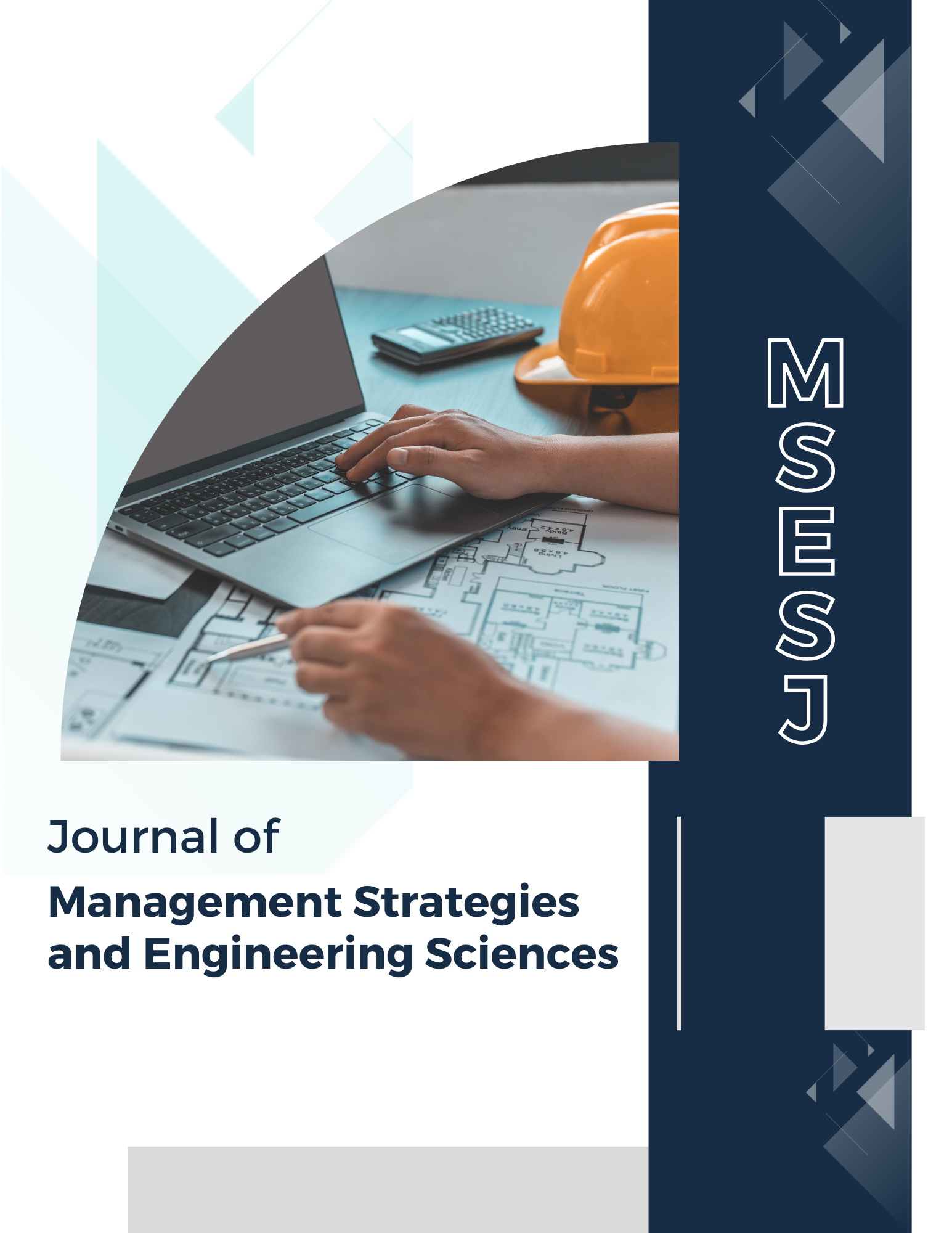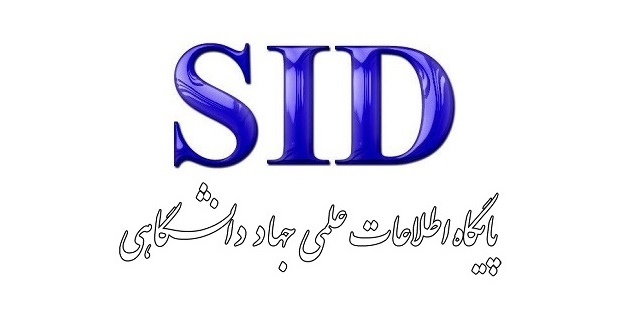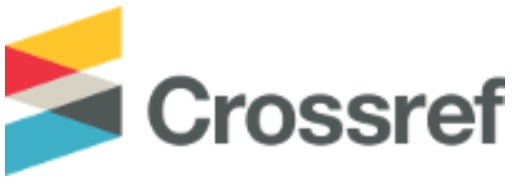Design and Development of a Model for Managing Organizational Behavior of Difficult Employees
Keywords:
Management, Human Resources, Organizational Behavior, Difficult Employees, University of MisanAbstract
The aim of this research is to design and develop a model for managing the organizational behavior of difficult employees. This study is applied-developmental in terms of its objective and descriptive-survey in terms of methodology. The research approach is an exploratory mixed method, combining qualitative and quantitative techniques. In the qualitative section, Strauss and Corbin’s grounded theory technique (2007) was utilized, while structural equation modeling (SEM) was employed in the quantitative section. The qualitative population consisted of educational experts (managers and academic experts at the University of Misan, Iraq), and 16 individuals were selected as the sample using purposive sampling. Semi-structured interviews were conducted to gather expert opinions, and the grounded theory model was analyzed using ATLAS.ti software. In the quantitative section, the population consisted of employees at the University of Misan, with a total of 200 members. Based on Morgan’s sampling table, 132 individuals were selected as the sample. The data collection tool for the quantitative phase was a researcher-developed questionnaire utilizing a five-point Likert scale. The content validity of the questionnaire was confirmed by consulting experts and specialists, and its reliability was verified by calculating Cronbach’s alpha coefficient. The collected data were analyzed using AMOS software to estimate the structural equation model. The findings revealed 20 general categories within a paradigmatic model, including causal conditions (negative organizational behaviors, negative managerial behaviors, factors causing difficult behavior, organizational damages), central phenomenon (managing difficult employees), contextual conditions (negative organizational culture, negative communications, improper organizational changes, inefficient leadership), intervening conditions (flawed policies and procedures, unsuitable work environment), strategies (designing a human resource management model, formulating organizational policies and regulations, effectively managing difficult employees, providing psychological and social support), and outcomes (a healthier and more efficient workplace, cultural improvement, enhanced organizational performance, effective human resource management, and reduced difficult behaviors).
References
D. Apeldoorn, "Comprehensible Extraction of Knowledge Bases for Learning Agents in Games," KI-Künstliche Intelligenz, pp. 1-5, 2024. [Online]. Available: https://doi.org/10.1007/s13218-024-00845-w.
U. P. Albuquerque et al., "Exploring large digital bodies for the study of human behavior," Evolutionary Psychological Science, vol. 9, no. 3, pp. 385-394, 2023. [Online]. Available: https://doi.org/10.1007/s40806-023-00363-2.
S. H. Appelbaum, K. J. Deguire, and M. Lay, "The relationship of ethical climate to deviant workplace behaviour," Corporate Governance: The International Journal of Business in Society, vol. 5, no. 4, pp. 43-55, 2005. [Online]. Available: https://doi.org/10.1108/14720700510616587.
R. Vaezi, M. Hossein Khani, and D. Kaboterpour, "The basis of the effect of organizational justice in the occurrence of deviant behavior on the mediating role of perception of organizational justice," Organizational Behavior Studies Quarterly, vol. 10, no. 2, pp. 116-123, 2016.
M. R. Tuckey et al., "Workplace bullying as an organizational problem: Spotlight on people management practices," Journal of Occupational Health Psychology, vol. 27, no. 6, p. 544, 2022. [Online]. Available: https://doi.org/10.1037/ocp0000335.
S. Zarei, "Investigating the effect of organizational pessimism factors on the anxiety of employees of Hamedan University of Medical Sciences," Master's thesis in the field of business management, strategic direction, Alvand Higher Education Institute, 2017.
C. Blazi and O. D. Awolusi, "Employee Engagement in Multinational Diverse Organization in Difficult Terrain: A Study of Non-Family Station Organization," Information Management and Business Review, vol. 12, no. 1 (I), pp. 45-62, 2020. [Online]. Available: https://doi.org/10.22610/imbr.v12i1(I).3025.
H. Aguinis, S. H. Jensen, and S. Kraus, "Policy implications of organizational behavior and human resource management research," Academy of Management Perspectives, vol. 36, no. 3, pp. 857-878, 2022. [Online]. Available: https://doi.org/10.5465/amp.2020.0093.
B. Yıldız and L. Alpkan, "A theoretical model on the proposed predictors of destructive deviant workplace behaviors and the mediator role of alienation," Procedia-Social and Behavioral Sciences, vol. 210, pp. 330-338, 2015. [Online]. Available: https://doi.org/10.1016/j.sbspro.2015.11.373.
T. Gong, C. Y. Wang, and K. Lee, "The consequences of customer-oriented constructive deviance in luxury-hotel restaurants," Journal of Retailing and Consumer Services, vol. 57, p. 102254, 2020. [Online]. Available: https://doi.org/10.1016/j.jretconser.2020.102254.
A. Yazdankhah, R. Sohrabi, and P. Ali Asghari, "Analyzing organizational anxiety: characteristics of anxious employees and factors affecting them," pp. 115-144, 2022.
R. Putra and H. Ali, "Organizational behavior determination and decision making: analysis of skills, motivation and communication (literature review of human resource management)," Dinasti International Journal of Digital Business Management, vol. 3, no. 3, pp. 420-431, 2022.
M. Linden and C. P. Arnold, Embitterment in the Workplace In Depression, Burnout and Suicide in Physicians: Insights from Oncology and Other Medical Professions. Cham: Springer International Publishing, 2021, pp. 137-146.
S. V. Paunonen and A. A. Nicol, "The personality hierarchy and the prediction of work behaviors," 2001. [Online]. Available: https://doi.org/10.1037/10434-007.
B. K. Punia and H. Rana, "Correlates, antecedents and implications of deviant workplace behavior: A review," GNA Journal of Management and Technology, pp. 98-104, 2013.
D. Montano, "A systemic organizational change model in occupational health management," Journal of Change Management, vol. 19, no. 3, pp. 183-200, 2019. [Online]. Available: https://doi.org/10.1080/14697017.2018.1526818.
M. Sadeghi, "The effect of the dark dimensions of personality on the behavior of bad-guy employees (research case: administrative employees of the Education and Training Organization of Chaharmahal and Bakhtiari Province)," Master's thesis in the field of management of humanities and social sciences campus of Yazd University, 2021.
O. Gbolabo, G. RoIshola, and R. Akanji, "Workplace incivility and employees' psychological status among staff of Lagos State Ministry Home Affairs," 2023.
J. D. Lilly, "What happened to civility? Understanding rude behavior through the lens of organizational justice," Business Horizons, vol. 60, no. 5, pp. 707-714, 2017. [Online]. Available: https://doi.org/10.1016/j.bushor.2017.05.014.
B. Kemelgor, L. Sussman, J. Kline, and J. Zurada, "Who are the difficult employees? Psychopathological attributions of their co-workers," Journal of Business & Economics Research (JBER), vol. 5, no. 10, 2007. [Online]. Available: https://doi.org/10.19030/jber.v5i10.2591.
S. Hutton and D. Gates, "Workplace incivility and productivity losses among direct care staff," AAOHN Journal, vol. 56, no. 4, pp. 168-175, 2008. [Online]. Available: https://doi.org/10.3928/08910162-20080401-01.
Y. Mai, W. Zhang, and L. Wang, "The effects of entrepreneurs' moral awareness and ethical behavior on product innovation of new ventures: Evidence from China," Chinese Management Studies, vol. 13, no. 2, pp. 421-446, 2019. [Online]. Available: https://doi.org/10.1108/CMS-10-2017-0302.
S. Kelley, Dishonorable Treatment: Workplace Incivility, Cultures of Honor, and Work Outcomes. 2007.
R. Javed, M. Amjad, U. Y. Faqeer-Ul-Ummi, and R. Bukhari, "Investigating factors affecting employee workplace deviant behavior," International Journal of Innovation and Applied Studies, vol. 9, no. 3, p. 1073, 2014.
L. M. Cortina, V. J. Magley, J. H. Williams, and R. D. Langhout, "Incivility in the workplace: incidence and impact," Journal of Occupational Health Psychology, vol. 6, no. 1, p. 64, 2001.

Downloads
Published
Submitted
Revised
Accepted
Issue
Section
License
Copyright (c) 2025 Management Strategies and Engineering Sciences

This work is licensed under a Creative Commons Attribution-NonCommercial 4.0 International License.











